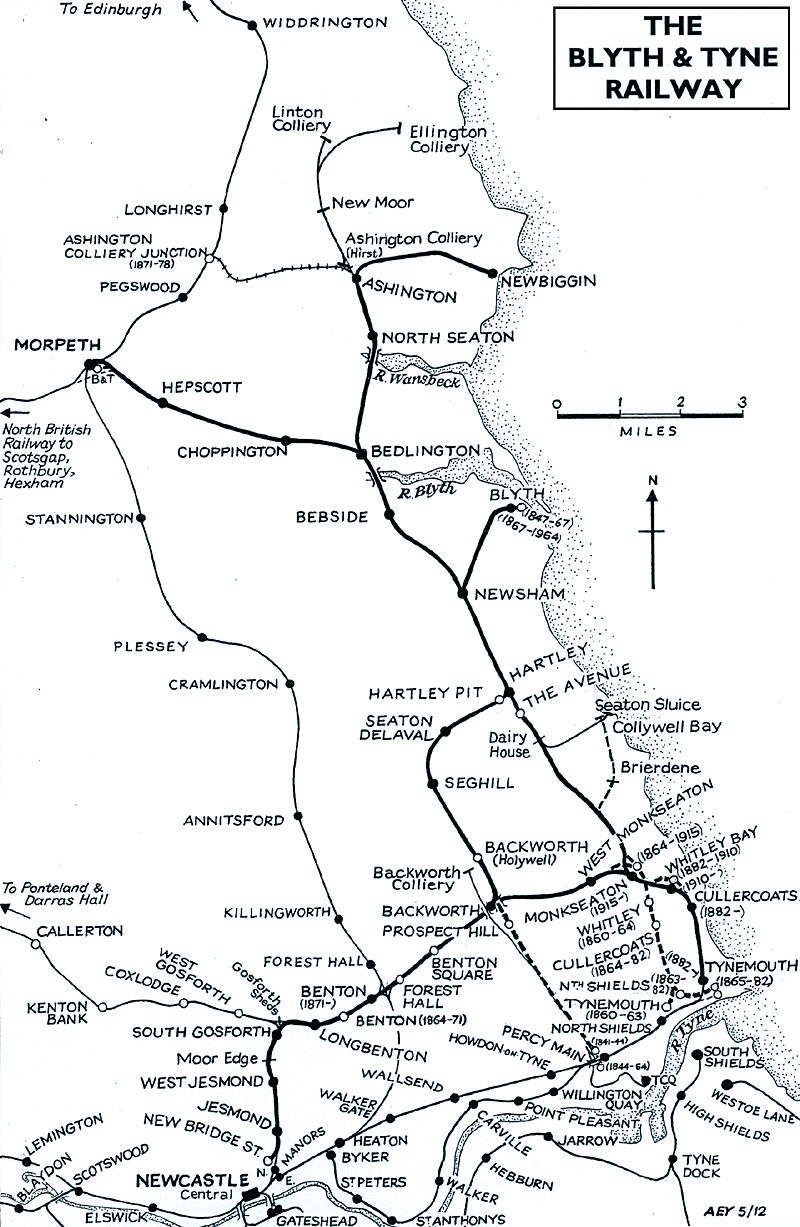 THE BLYTH & TYNE RAILWAYThe Blyth & Tyne Railway operated a small network in south-east Northumberland until it was absorbed in 1874 by its powerful neighbour, the North Eastern Railway. The B&T had humble origins in 1840 as a colliery waggonway linking a coal mine at Seghill with staiths on the River Tyne at Percy Main, but it introduced passenger trains a year later and expanded its network in stages over the next thirty years. By 1860 it served expanding coal-mining towns, notably Bedlington and Blyth – the latter also a significant port – as well as mining villages and the small market town of Morpeth. In 1864 the company added a branch to Newcastle, encouraging the development of its north-east suburbs, and another to Tynemouth which was growing as a holiday destination and commuter settlement; at the same time they closed their original route from Backworth to Percy Main. The NER later extended the B&T system, at its northern end, to Ashington and Newbiggin. The early B&T stations were modest affairs, some of the earlier ones being closed or rebuilt without being photographed or shown in detail on maps. However there was an attempt to impress when the Newcastle branch was added, with particularly attractive stations built at Jesmond and (South) Gosforth. The elegant Picton House was acquired to provide the Newcastle terminus at New Bridge Street. Substantial stations were also provided at the B&T’s first and third Tynemouth termini. Anyone studying the history of B&T stations will find the subject complex and confusing, particularly concerning the naming of stations and the developments of lines and stations in the Tynemouth area. Station names were both fluid and repetitive in the Benton area, and the opening of three different B&T termini to serve Tynemouth in the early 1860s, requiring the renaming of the superseded stations, will tax the patience of most readers. Although things settled down under NER management at Tynemouth in 1882 when the current station opened, further north at Whitley / Monkseaton there were deviations of routes, new stations and exchanging of station names as late as 1915. The northern part of the B&T network has ceased to carry passengers, and little remains of its stations; but freight traffic has kept much of the route in place, and it may eventually carry passengers again. Since 1980 almost all of the southern section has been used by the Metro light rail system, and it has retained most of the existing stations. The majority were built by the NER or LNER rather than the B&T, and they are included in this Disused Stations survey as all of them, except Tynemouth, were closed for some time to be converted for Metro use. The opportunity has been taken to include some ‘marginal’ lines and stations, notably the Ashington Coal Company’s network, the Seaton Sluice waggonway’s passenger service, and the abortive Monkseaton to Collywell Bay line. I am grateful for help given by:
This major addition to the Disused Stations website almost completes the coverage of south-east Northumberland. In due course Tyne Commission Quay and the Metro stations at Walkergate, Wallsend, Howdon, Percy Main and North Shields will be added. Click on stations on the map below
|


 Home Page
Home Page